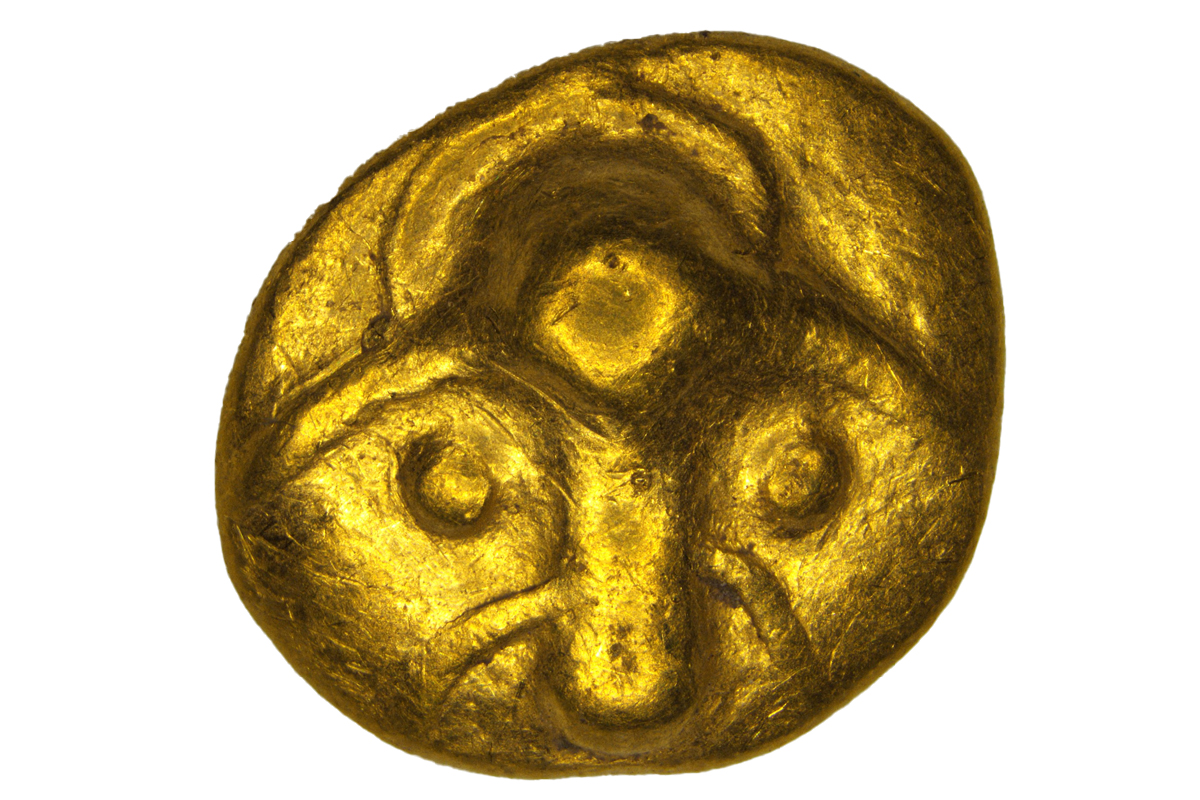The State Office for Archaeology of Saxony (LfA) has announced the discovery of a 2,200-year-old Celtic gold coin near Gundorf, northwest of Leipzig.
The 2-gram coin, made of almost pure gold, is identified as a quarter stater. The obverse depicts a stylised head, possibly of an animal such as a stag, while the reverse shows an open neck ring with thickened ends, a rounded star, and a sphere. Similar coins from the 3rd century BC are primarily known from northern Bohemia, confirming the coin’s Celtic origin.
According to Dr. Regina Smolnik, Celtic coins are extremely rare in Saxony. Although the region lay beyond Celtic settlement areas, this find provides clear evidence of regular contact and exchange.
Its nearly mint condition suggests it was not used in circulation but likely served as a status symbol or store of value for an elite individual engaged in trade with Celtic communities. Until recently, only two Celtic coins were known in Saxony, one of which, discovered in the 19th century, has since been lost.
Intensive surveys in recent years have added nine more coins, including only one other gold piece with a similar curvature. This characteristic bowl-like shape gives rise to the term “rainbow cup.”
The name derives from ancient folklore, which held that treasures could be found where a rainbow touched the ground and that these curved gold pieces had fallen from the sky. Such tales likely arose because coins of this kind often appeared in fields after heavy rain, washed from the soil.
Previously, the oldest known coin from Saxony was a silver cluster quinarius found near Zauschwitz in 2007, dated to the early 1st century BC. The newly discovered Gundorf gold “rainbow cup” predates that find, making it the oldest known coin ever discovered in Saxony.
Header Image Credit : Saxon State
Sources : Saxon State





